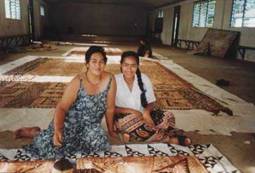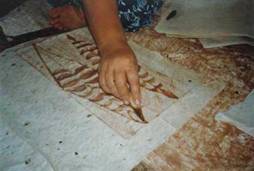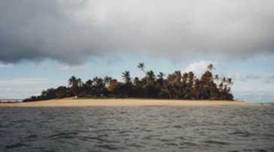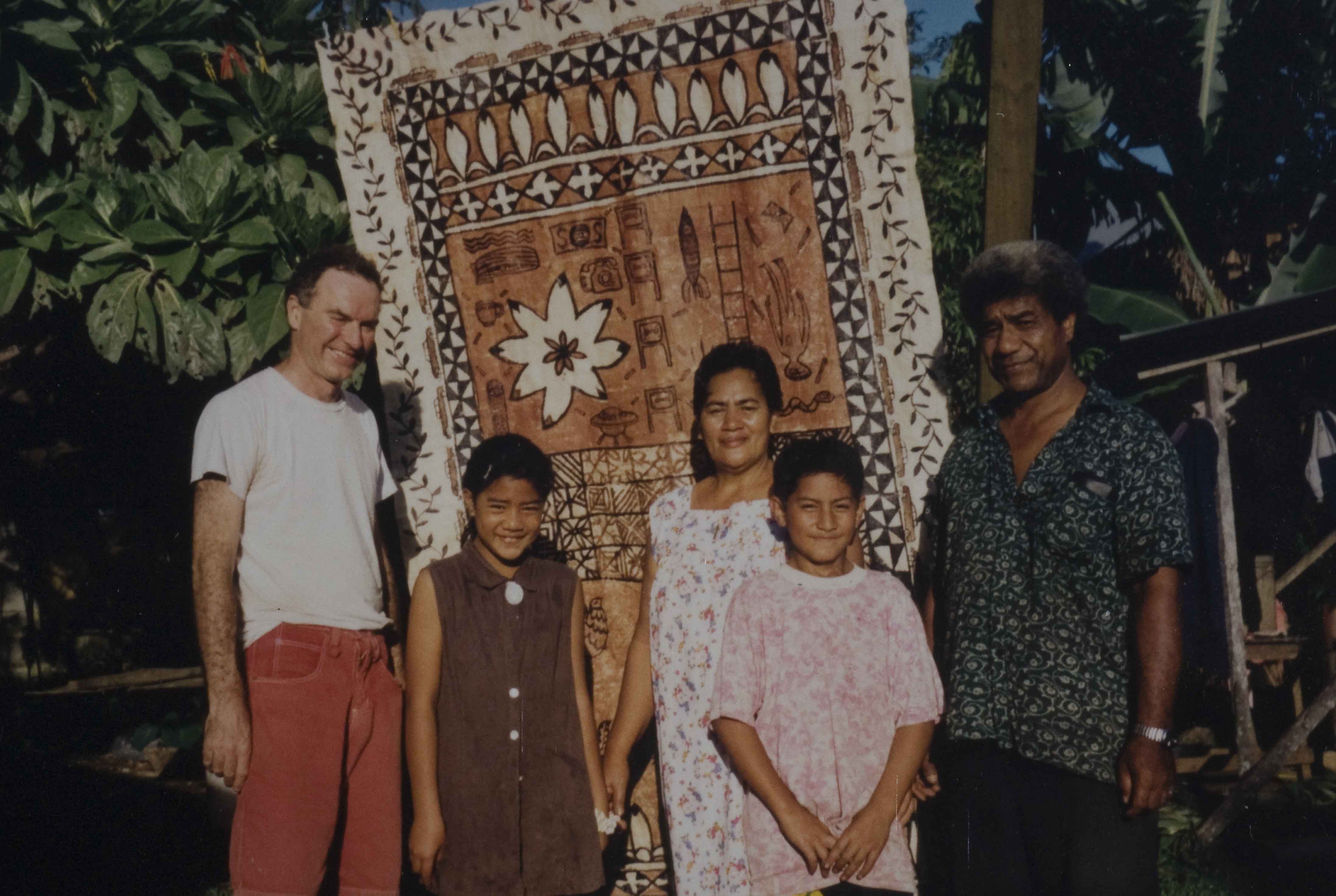Adam Rish - Tapa Toe To Tonga






Tapa Cloth
The production of tapa cloth dates back 3000 years in the Pacific but is currently only practised extensively in Fiji and Tonga. The Tongan term for the cloth is ‘ngatu’. The pieces are, or were, used as clothing, room dividers and decoration. Their most significant function, however, is as a part of ‘koloa’ (gift exchange) economy whereby they are given on ceremonial occasions. The cloths may cost over $2000 each - the average annual wage of a Tongan family (much derived from money sent from family members overseas)! Contrary to current trends for many indigenous artforms, the production of tapa, in Tonga, is booming.
Tapa is made from the beaten, inner bark of the paper mulberry tree (Broussonetia papyrifera) or ‘hiapo’ in Tongan. The production of the unpainted cloth is very labour intensive and the rhythm of the wooden 'ike' beaters may be heard everywhere on Tongatapu. The 'tutu' pieces are felted (feta'aki) together using beating and the glue from the arrowroot. An attempt to introduce mechanical beaters in the 1980's failed due to their disastrous effect upon the social, labour relations of the (female) economy. The machines were subsequently left to decay.
Natural dyes are prepared from bark of the ‘koka’ tree combined with juice from the ‘tongo’ plant and the candlenut ('tuitui'). These are made in red and black and then mixed to make shades of brown. A background pattern is applied using a rubbing board or ‘kupesi’ made from patterns sewn with palm leaf fronds. Areas of the rubbing may then be over-painted. The painted cloths are usually very large 5 metres by 15 metres (or even up to 2 kilometers) long and as such are among the world's biggest visual art forms. (Even more impressive for people living in small, thatch roofed cottages).
Villages and individual artists have shared and unique kupesi motifs (some with lost meanings) such as trees, plants, animals and crowns. The imagery may commemorate special events such as; victories, coronations, the introduction of the gramophone, Queen Salote's visit to Wimbledon, Tongan's wartime contribution to buy a Spitfire. The designs are often metaphoric and abstract (‘heliaki’). Further symbolic meaning is generated in the relationships between the combination of kupesi employed in the production of a single cloth. There is an element of competition between artists and villages in the painting of the most beautiful cloths.
Adam Rish has been exhibiting in Australia for the past 30 years. His interest is in cross cultural collaboration as “world art” (like “world music”) to affirm indigenous culture, regional diversity and the possibility of productive inter-cultural relations. Since 1975 this interest has taken him to Indonesia, Turkey, and inland Australia producing, with fellow, indigenous artists, batiks, ikats, kilims and ochre paintings respectively. He employs traditional techniques and adapts them with modern technological and domestic images so, for example, cars, planes and television sets may take the place of traditional abstractions of flowers, birds and clouds.
In 1999 he became aware of the potential of tapa cloth through an exhibition at Djamu Gallery, Sydney, of a selection of the Australian Museum's Niue collection (in conjunction with New Zealand based, Niue lineage, artist John Pule). An ensuing visit to Tonga saw the commencement of work on collaborative, tapa pieces with Palema Tualau, in Veitongo, Tongatapu. The works arose from discussion between the co-artists about imagery, and the narratives associated with them. Events are depicted in a contemporary context by inserting technological and political elements. The pieces are made on site in Tonga and/or finished in Rish's, Sydney studio. They incorporate recycled ngatu and in addition to traditional, ‘kupesi’ generated motifs also include computer manipulated images, inkjet printed onto tapa cloth. These pieces are then felted onto the larger ngatu and over painted with traditional tongo dyes.
As examples: In “Supa Mahei Ngatu” (Very Crazy Tapa) local Tongan floral motifs are interspersed with televisions, cars and assassinated kings. “Nagtu Fakaleiti” concerns the islands' cross-gender transvestite culture. "Ko’e tau ‘alu Ki fe/Where are we going?" refers to Gauguin’s painting “Where do we come from? What are we? Where are we going?” which also takes a Western (proto-Existentialist view) of the Pacific. The title is written in French and in Tongan with the writing, as in much of Tongan and Rish's art (vision being preconditioned by language) forming a major thematic and decorative element. Other locally derived and observed imagery includes ladders (with nailed rungs), armed guards and various means of transport. A border of telephones derives from the traditional motifs of people.
"Carpark in Paradise" employs Niue designs based on plant forms. Unfortunately, due to church influences, no new tapa has been made in Niue for over a century. "Kings and Glass Castles" shows a line of cut out kings (themselves like glass) just visible beneath the skyline of lower Manhattan.
In "Where There’s Smoke"everything is decoratively smouldering - a mirror of Tongan politics with a population torn between a fierce, monarchist nationalism and a deep, social, economic discontent.
These collaborative works represent a dystopic world, moderated by a comic humanism - it is 'another rotten day in paradise'. For our media saturated society, addicted to spin doctored reports of stylised terror, they become relevant as souvenirs of front page violence tamed into soft, hybrid, folk art forms.